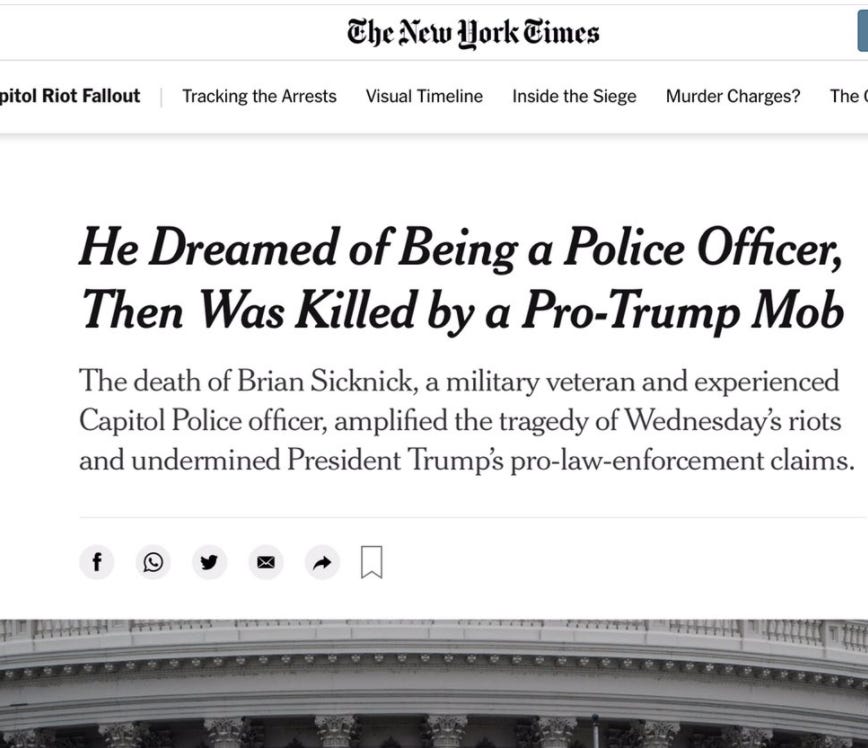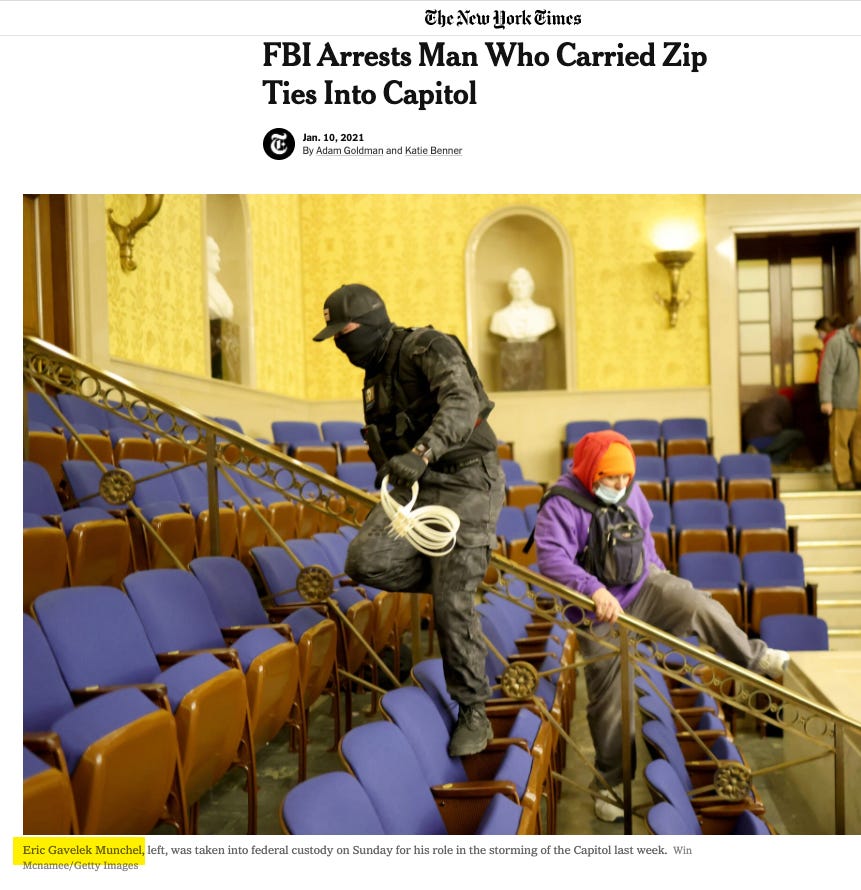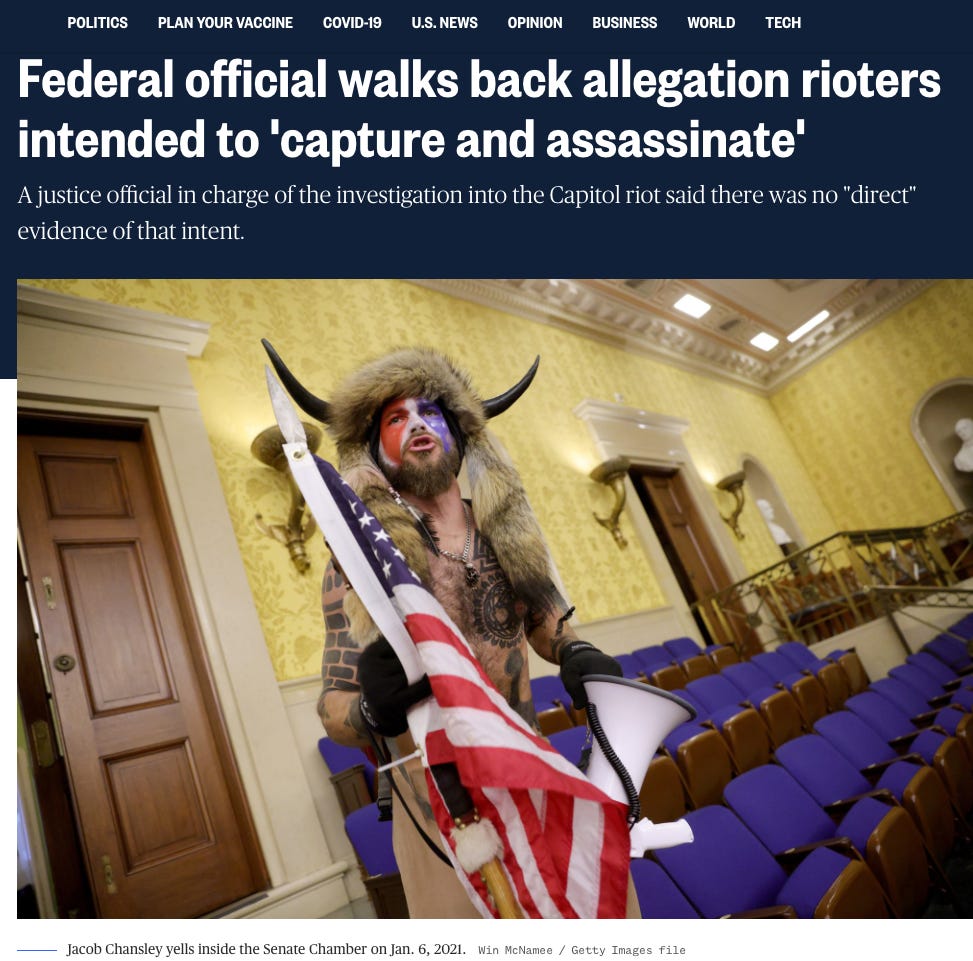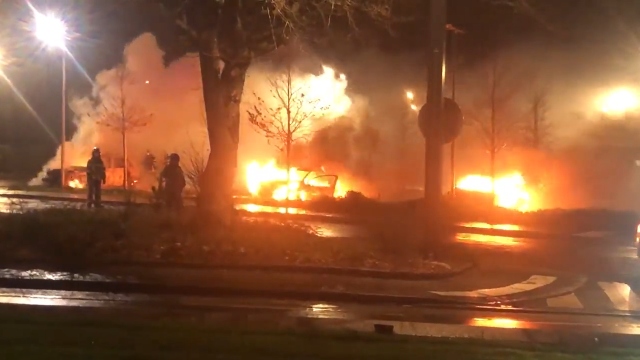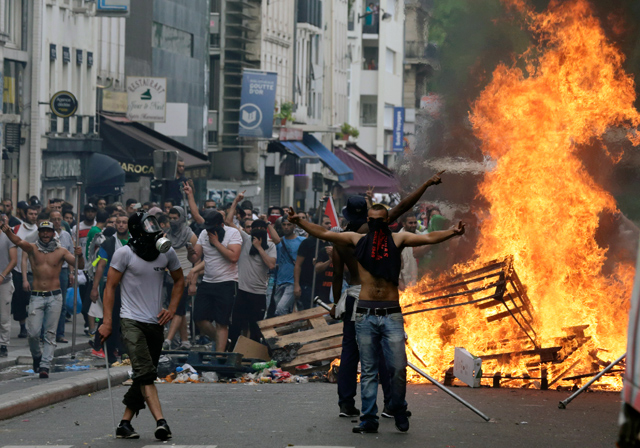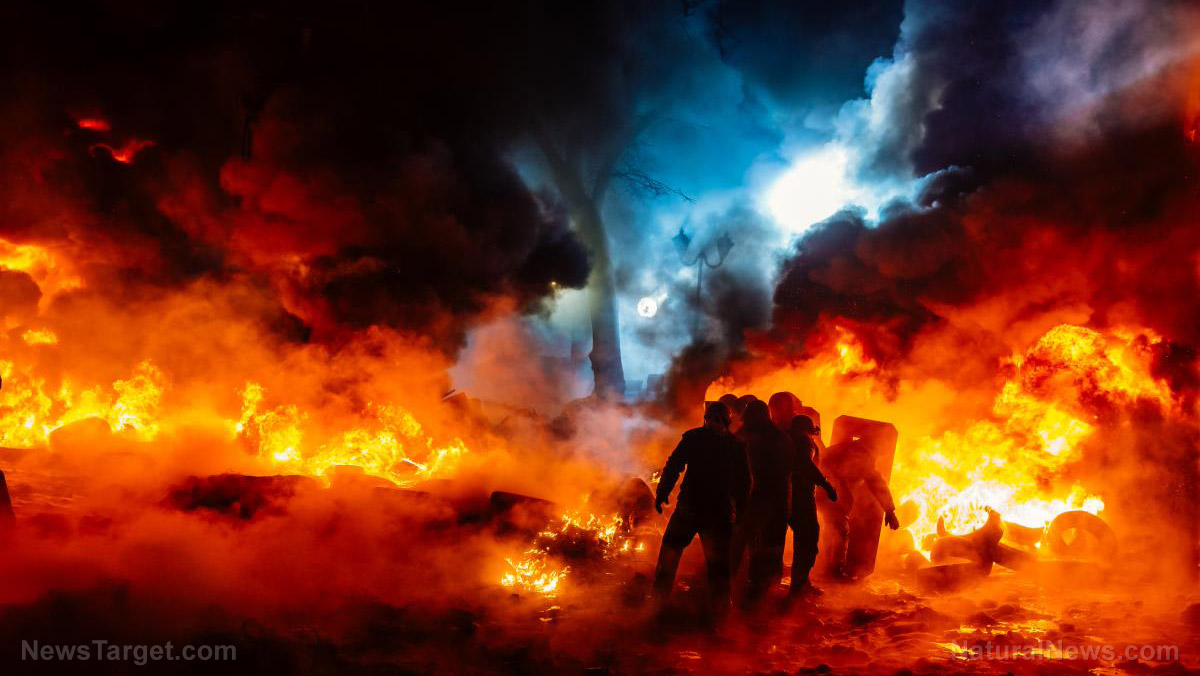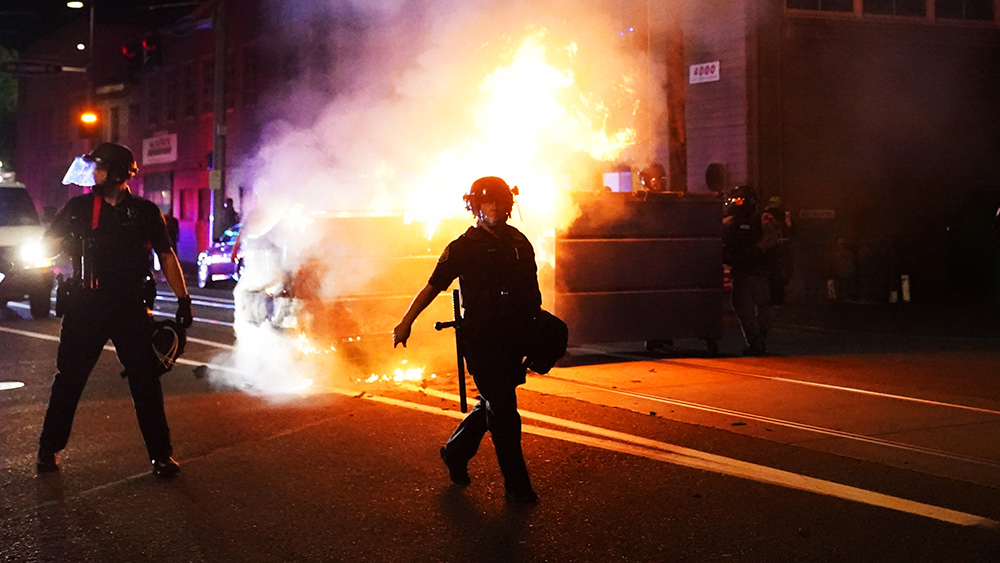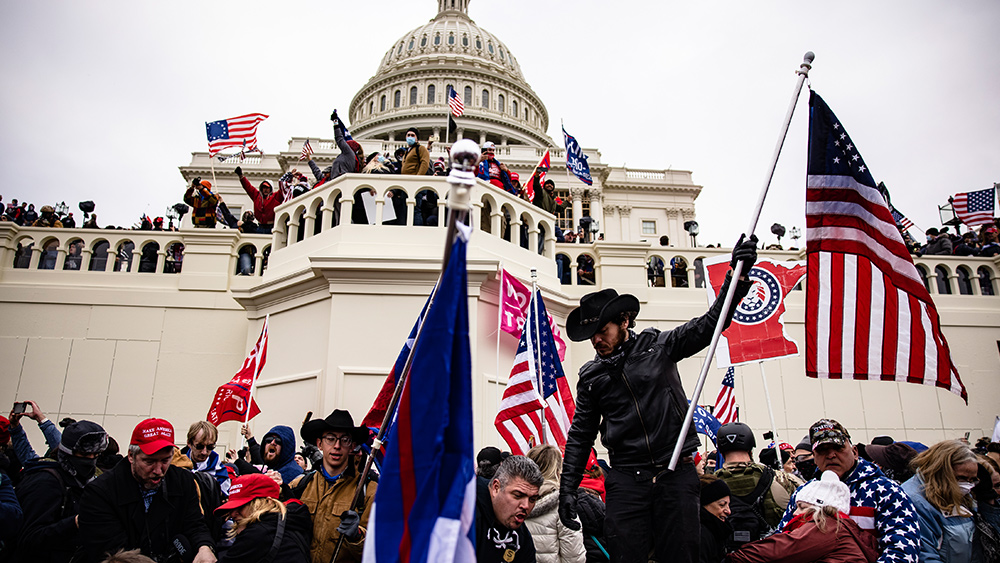
(Article republished from Greenwald.Substack.com)
But none of that justifies lying about what happened that day, especially by the news media. Condemning that riot does not allow, let alone require, echoing false claims in order to render the event more menacing and serious than it actually was. There is no circumstance or motive that justifies the dissemination of false claims by journalists. The more consequential the event, the less justified, and more harmful, serial journalistic falsehoods are.
Yet this is exactly what has happened, and continues to happen, since that riot almost seven weeks ago. And anyone who tries to correct these falsehoods is instantly attacked with the cynical accusation that if you want only truthful reporting about what happened, then you’re trying to “minimize” what happened and are likely an apologist for if not a full-fledged supporter of the protesters themselves.
One of the most significant of these falsehoods was the tale — endorsed over and over without any caveats by the media for more than a month — that Capitol Police officer Brian Sicknick was murdered by the pro-Trump mob when they beat him to death with a fire extinguisher. That claim was first published by The New York Times on January 8 in an article headlined “Capitol Police Officer Dies From Injuries in Pro-Trump Rampage.” It cited “two [anonymous] law enforcement officials” to claim that Sicknick died “with the mob rampaging through the halls of Congress” and after he “was struck with a fire extinguisher.”
A second New York Times article from later that day — bearing the more dramatic headline: “He Dreamed of Being a Police Officer, Then Was Killed by a Pro-Trump Mob” — elaborated on that story:
[caption id="" align="alignnone" width="598"]
 The New York Times, in a now-”updated” article, Jan. 8, 2021[/caption]
The New York Times, in a now-”updated” article, Jan. 8, 2021[/caption]
After publication of these two articles, this horrifying story about a pro-Trump mob beating a police officer to death with a fire extinguisher was repeated over and over, by multiple journalists on television, in print, and on social media. It became arguably the single most-emphasized and known story of this event, and understandably so — it was a savage and barbaric act that resulted in the harrowing killing by a pro-Trump mob of a young Capitol police officer.
It took on such importance for a clear reason: Sicknick’s death was the only example the media had of the pro-Trump mob deliberately killing anyone. In a January 11 article detailing the five people who died on the day of the Capitol protest, the New York Times again told the Sicknick story: “Law enforcement officials said he had been ‘physically engaging with protesters’ and was struck in the head with a fire extinguisher.”
But none of the other four deaths were at the hands of the protesters: the only other person killed with deliberate violence was a pro-Trump protester, Ashli Babbitt, unarmed when shot in the neck by a police officer at close range. The other three deaths were all pro-Trump protesters: Kevin Greeson, who died of a heart attack outside the Capitol; Benjamin Philips, 50, “the founder of a pro-Trump website called Trumparoo,” who died of a stroke that day; and Rosanne Boyland, a fanatical Trump supporter whom the Times says was inadvertently “killed in a crush of fellow rioters during their attempt to fight through a police line.”
This is why the fire extinguisher story became so vital to those intent on depicting these events in the most violent and menacing light possible. Without Sicknick having his skull bashed in with a fire extinguisher, there were no deaths that day that could be attributed to deliberate violence by pro-Trump protesters. Three weeks later, The Washington Post said dozens of officers (a total of 140) had various degrees of injuries, but none reported as life-threatening, and at least two police officers committed suicide after the riot. So Sicknick was the only person killed who was not a pro-Trump protester, and the only one deliberately killed by the mob itself.
It is hard to overstate how pervasive this fire extinguisher story became. Over and over, major media outlets and mainstream journalists used this story to dramatize what happened:
[caption id="" align="alignnone" width="598"]
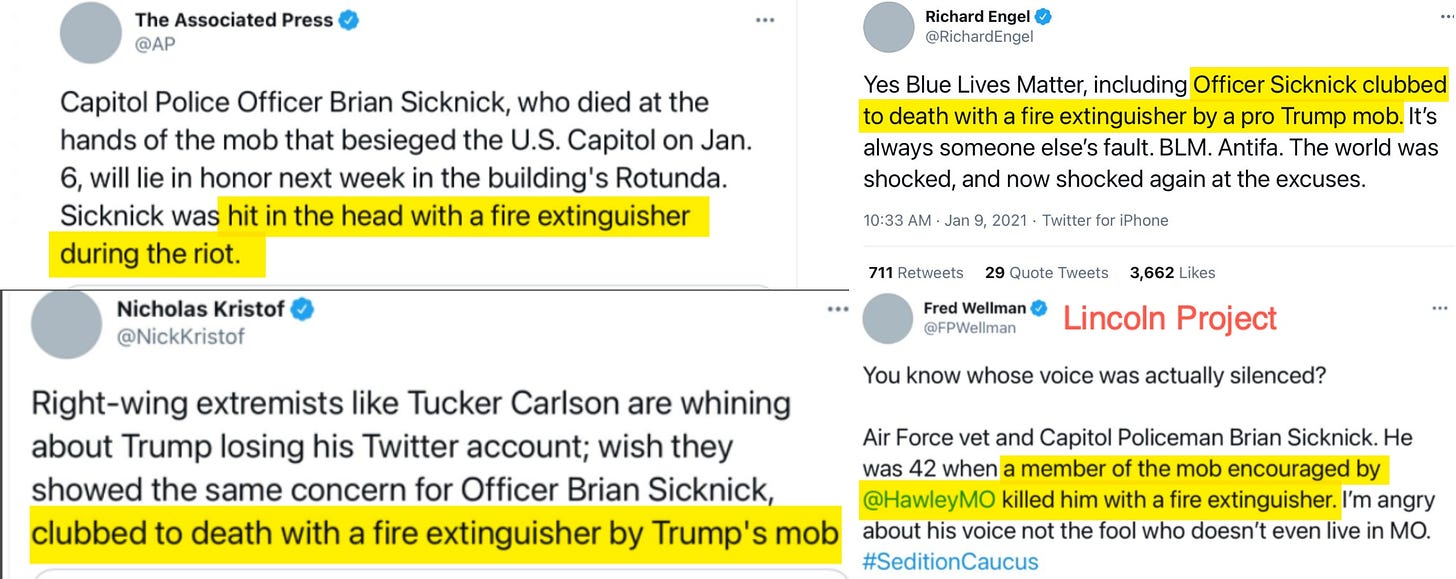 Clockwise: Tweet of Associated Press, Jan. 29; Tweet of NBC’s Richard Engel, Jan. 9; Tweet of the Lincoln Project’s Fred Willman, Jan. 29; Tweet of The New York Times’ Nicholas Kirstof, Jan. 9[/caption]
Clockwise: Tweet of Associated Press, Jan. 29; Tweet of NBC’s Richard Engel, Jan. 9; Tweet of the Lincoln Project’s Fred Willman, Jan. 29; Tweet of The New York Times’ Nicholas Kirstof, Jan. 9[/caption]
Television hosts gravely intoned when telling this story, manipulating viewers’ emotions by making them believe the mob had done something unspeakably barbaric:
After the media bombarded Americans with this story for a full month without pause, it took center stage at Trump’s impeachment process. As former federal prosecutor Andrew McCarthy noted, the article of impeachment itself stated that “Trump supporters ‘injured and killed law enforcement personnel.’” The House impeachment managers explicitly claimed on page 28 of their pretrial memorandum that “the insurrectionists killed a Capitol Police officer by striking him in the head with a fire extinguisher.”
Once the impeachment trial ended in an acquittal, President Joe Biden issued a statement and referenced this claim in the very first paragraph. Sicknick, said the President, lost “his life while protecting the Capitol from a violent, riotous mob on January 6, 2021.”
The problem with this story is that it is false in all respects. From the start, there was almost no evidence to substantiate it. The only basis were the two original New York Times articles asserting that this happened based on the claim of anonymous law enforcement officials.
Despite this alleged brutal murder taking place in one of the most surveilled buildings on the planet, filled that day with hundreds of cellphones taping the events, nobody saw video of it. No photographs depicted it. To this day, no autopsy report has been released. No details from any official source have been provided.
Not only was there no reason to believe this happened from the start, the little that was known should have caused doubt. On the same day the Times published its two articles with the “fire extinguisher” story, ProPublica published one that should have raised serious doubts about it.
The outlet interviewed Sicknick’s brother, who said that “Sicknick had texted [the family] Wednesday night to say that while he had been pepper-sprayed, he was in good spirits.” That obviously conflicted with the Times’ story that the mob “overpowered Sicknick” and “struck him in the head with a fire extinguisher,” after which, “with a bloody gash in his head, Mr. Sicknick was rushed to the hospital and placed on life support.”
But no matter. The fire extinguisher story was now a matter of lore. Nobody could question it. And nobody did: until after a February 2 CNN article that asked why nobody has been arrested for what clearly was the most serious crime committed that day: the brutal murder of Officer Sicknick with a fire extinguisher. Though the headline gave no hint of this, the middle of the article provided evidence which essentially declared the original New York Times story false:
In Sicknick's case, it's still not known publicly what caused him to collapse the night of the insurrection. Findings from a medical examiner's review have not yet been released and authorities have not made any announcements about that ongoing process.
According to one law enforcement official, medical examiners did not find signs that the officer sustained any blunt force trauma, so investigators believe that early reports that he was fatally struck by a fire extinguisher are not true.
The CNN story speculates that perhaps Sicknick inhaled “bear spray,” but like the ProPublica interview with his brother who said he inhaled pepper spray, does not say whether it came from the police or protesters. It is also just a theory. CNN noted that investigators are “vexed by a lack of evidence that could prove someone caused his death as he defended the Capitol during last month's insurrection.” Beyond that, “to date, little information has been shared publicly about the circumstances of the death of the 13-year veteran of the police force, including any findings from an autopsy that was conducted by DC's medical examiner.”
Few noticed this remarkable admission buried in this article. None of this was seriously questioned until a relatively new outlet called Revolver News on February 9 compiled and analyzed all the contradictions and lack of evidence in the prevailing story, after which Fox News’ Tucker Carlson, citing that article, devoted the first eight minutes of his February 10 program to examining these massive evidentiary holes.
That caused right-wing media outlets to begin questioning what happened, but mainstream liberal outlets — those who spread the story aggressively in the first place — largely and predictably ignored it all.
This week, the paper that first published the false story — in lieu of a retraction or an explanation of how and why it got the story wrong — simply went back to the first two articles, more than five weeks later, and quietly posted what it called an “update” at the top of both five-week-old articles:
[caption id="" align="alignnone" width="599"]
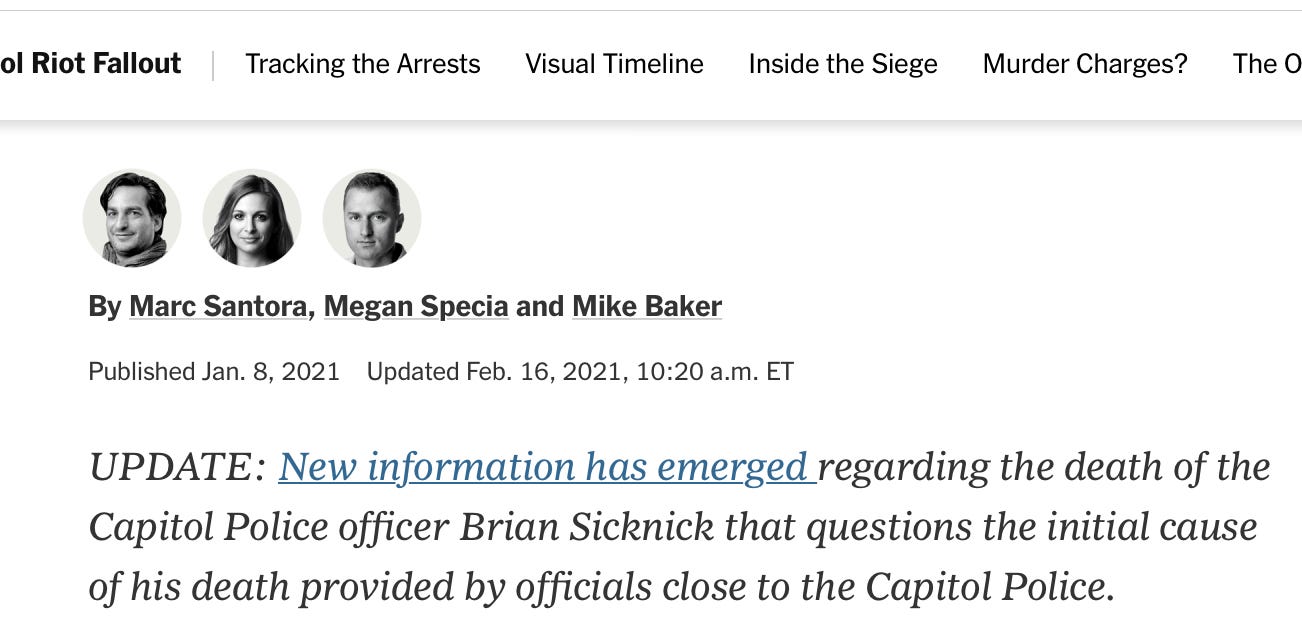 Caption that now sits atop both New York Times articles from Jan. 8 about Officer Sicknick’s death.[/caption]
Caption that now sits atop both New York Times articles from Jan. 8 about Officer Sicknick’s death.[/caption]
With the impeachment trial now over, the articles are now rewritten to reflect that the original story was false. But there was nothing done by The New York Times to explain an error of this magnitude, let alone to try to undo the damage it did by misleading the public. They did not expressly retract or even “correct” the story. Worse, there is at least one article of theirs, the January 11 one that purports to describe how the five people died that day, which continues to include the false “fire extinguisher” story with no correction or update.
The fire extinguisher tale was far from the only false or dubious claim that the media caused to circulate about the events that day. In some cases, they continue to circulate them.
In the days after the protest, numerous viral tweets pointed to a photograph of Eric Munchel with zip-ties. The photo was used continually to suggest that he took those zip-ties into the Capitol because of a premeditated plot to detain lawmakers and hold them hostage. Politico described Munchel as “the man who allegedly entered the Senate chamber during the Capitol riot while carrying a taser and zip-tie handcuffs.”
The Washington Post used the images to refer to “chatters in far-right forums explicitly discussing how to storm the building, handcuff lawmakers with zip ties.” That the zip-tie photo of Munchel made the Capitol riot far more than a mere riot carried out by a band of disorganized misfits, but rather a nefarious and well-coordinated plot to kidnap members of Congress, became almost as widespread as the fire extinguisher story. Yet again, it was The New York Times that led the way in consecrating maximalist claims. “FBI Arrests Man Who Carried Zip Ties Into Capitol,” blared the paper’s headline on January 10, featuring the now-iconic photo of Munchel at the top.
But on January 21, the “zip-tie man’s” own prosecutors admitted none of that was true. He did not take zip-ties with him from home or carry them into the Capitol. Instead, he found them on a table, and took them to prevent their use by the police:
Eric Munchel, a pro-Trump rioter who stormed the Capitol building while holding plastic handcuffs, took the restraints from a table inside the Capitol building, prosecutors said in a court filing Wednesday.
Munchel, who broke into the building with his mom, was labeled "zip-tie guy" after he was photographed barreling down the Senate chamber holding the restraints. His appearance raised questions about whether the insurrectionists who sought to stop Congress from counting Electoral College votes on January 6 also intended to take lawmakers hostage.
But according to the new filing, Munchel and his mother took the handcuffs from within the Capitol building - apparently to ensure the Capitol Police couldn't use them on the insurrectionists - rather than bring them in when they initially breached the building.
(A second man whose photo with zip-ties later surfaced similarly told Ronan Farrow that he found them on the floor, and the FBI has acknowledged it has no evidence to the contrary).
Why does this matter? For the same reason media outlets so excitedly seized on this claim. If Munchel had brought zip-ties with him, that would be suggestive of a premeditated plot to detain people: quite terrorizing, as it suggests malicious and well-planned intent. But he instead just found them on a table by happenstance and, according to his own prosecutors, grabbed them with benign intent.
Then, perhaps most importantly, is the ongoing insistence on calling the Capitol riot an armed insurrection. Under the law, an insurrection is one of the most serious crises that can arise. It allows virtually unlimited presidential powers — which is why there was so much angst when Tom Cotton proposed it in his New York Times op-ed over the summer, publication of which resulted in the departure of two editors. Insurrection even allows for the suspension by the president of habeas corpus: the right to be heard in court if you are detained.
So it matters a great deal legally, but also politically, if the U.S. really did suffer an armed insurrection and continues to face one. Though there is no controlling, clear definition, that term usually connotes not a three-hour riot but an ongoing, serious plot by a faction of the citizenry to overthrow or otherwise subvert the government.
Just today, PolitiFact purported to “fact-check” a statement from Sen. Ron Johnson (R-WI) made on Monday. Sen. Johnson told a local radio station:
"The fact of the matter is this didn’t seem like an armed insurrection to me. I mean armed, when you hear armed, don’t you think of firearms? Here’s the questions I would have liked to ask. How many firearms were confiscated? How many shots were fired? I’m only aware of one, and I’ll defend that law enforcement officer for taking that shot.
The fact-checking site assigned the Senator its “Pants on Fire” designation for that statement, calling it “ridiculous revisionist history.” But the “fact-checkers” cannot refute a single claim he made. At least from what is known publicly, there is no evidence of a single protester wielding let alone using a firearm inside the Capitol on that day. As indicated, the only person to have been shot was a pro-Trump protester killed by a Capitol police officer, and the only person said to have been killed by the protesters, Officer Sicknick, died under circumstances that are still completely unclear.
That protesters were found before and after the riot with weapons does not mean they intended to use them as part of the protest. For better or worse, the U.S. is a country where firearm possession is common and legal. And what we know for certain is that there is no evidence of anyone brandishing a gun in that building. That fact makes a pretty large dent in the attempt to characterize this as an “armed insurrection” rather than a riot.
Indeed, the most dramatic claims spread by the media to raise fear levels as high as possible and depict this as a violent insurrection have turned out to be unfounded or were affirmatively disproven.
On January 15, Reuters published an article about the arrest of the “Q-Shaman,” Jacob Chansley, headlined “U.S. says Capitol rioters meant to 'capture and assassinate' officials.” It claimed that “federal prosecutors offered an ominous new assessment of last week’s siege of the U.S. Capitol by President Donald Trump’s supporters on Thursday, saying in a court filing that rioters intended ‘to capture and assassinate elected officials.’” Predictably, that caused viral social media postings from mainstream reporters and prominent pundits, such as Harvard Law’s Laurence Tribe, manifesting in the most ominous tones possible:
https://twitter.com/tribelaw/status/1350183476868374531
Shortly thereafter, however, a DOJ “official walked back a federal claim that Capitol rioters ‘intended capture and assassinate elected officials.’" Specifically, “Washington's acting U.S. Attorney, Michael Sherwin, said in a telephone briefing, ‘There is no direct evidence at this point of kill-capture teams and assassination.’"
Over and over, no evidence has emerged for the most melodramatic media claims — torn out Panic Buttons and plots to kill Vice President Mike Pence or Mitt Romney. What we know for certain, as The Washington Post noted this week, is that “Despite warnings of violent plots around Inauguration Day, only a smattering of right-wing protesters appeared at the nation’s statehouses.” That does not sound like an ongoing insurrection, to put it mildly.
All this matters because it inherently matters if the media is recklessly circulating falsehoods about the most inflammatory and significant news stories. As was true for their series of Russiagate debacles, even if each “mistake” standing alone can be dismissed as relatively insignificant or understandable, when they pile up — always in the same narrative direction — people rightly conclude the propaganda is deliberate and trust in journalism erodes further.
But in this case, this matters for reasons far more significant than corporate media’s attempt to salvage the last vestiges of their credibility. Washington, D.C. remains indefinitely militarized. The establishment wings of both parties are still exploiting the emotions surrounding the Capitol breach to justify a new domestic War on Terror. The FBI is on the prowl for dissidents on the right and the left, and online censorship in the name of combatting domestic terrorism continues to rise.
One can — and should — condemn the January 6 riot without inflating the threat it posed. And one can — and should — insist on both factual accuracy and sober restraint without standing accused of sympathy for the rioters.
Read more at: Greenwald.Substack.com and MediaFactWatch.com.
Please contact us for more information.










